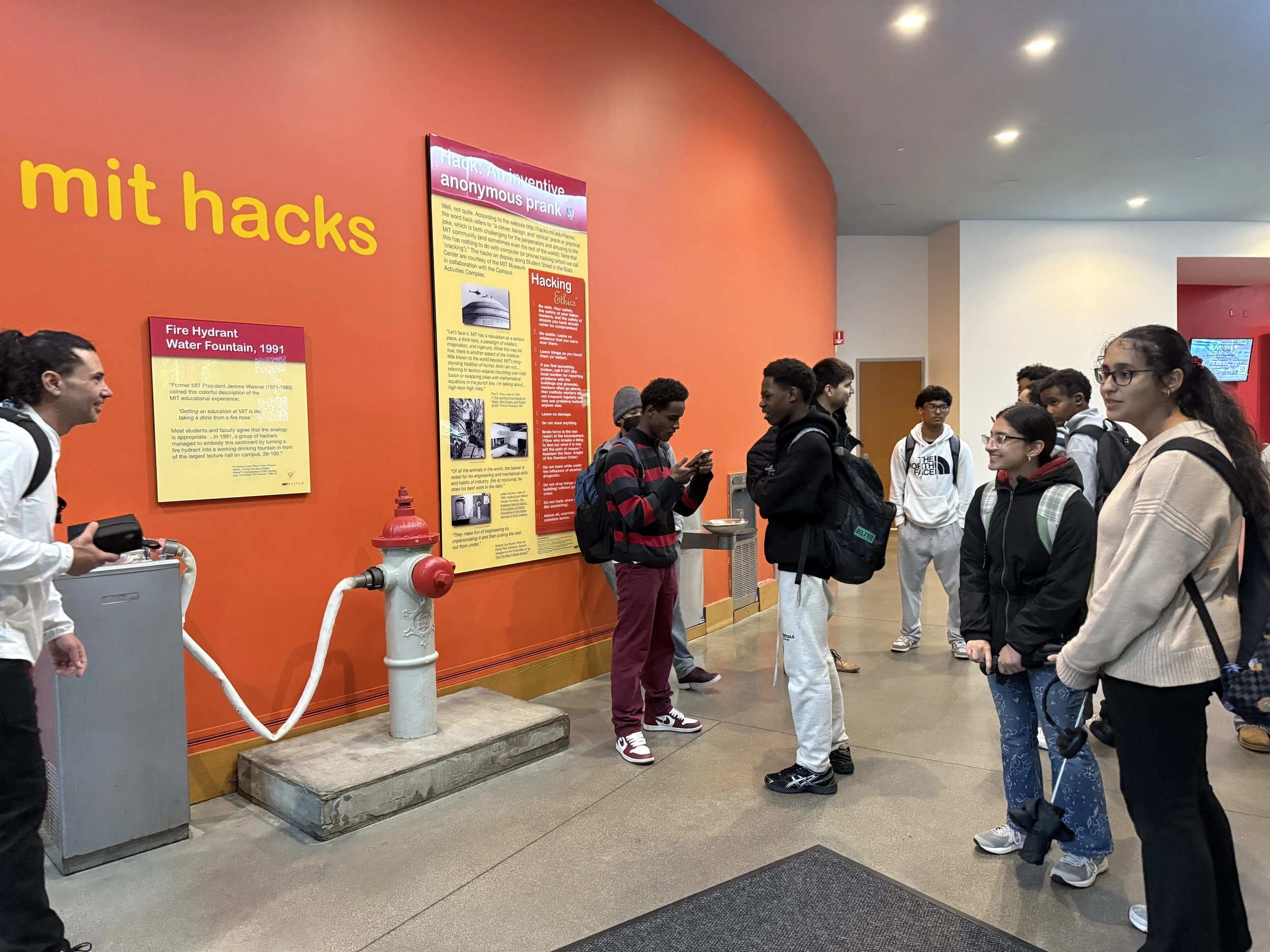The Gap No One Was Closing
BLOG 2: The Gap No One Was Closing
On a recent visit to MIT, we stopped at the famous MIT Firehose Hack—the sign reads, “Getting an education from MIT is like taking a drink from a firehose.”
That night, I couldn’t stop thinking:
What happens to the young people who never even get to the faucet?
That’s the gap we’re working to close. Because early curiosity doesn’t fade from lack of passion—it fades from lack of access.
Opening Scene: A Pattern We Couldn't Ignore
In classrooms, we saw bright, curious students disconnect from science and math by fourth grade. In out-of-school programs, we saw short-term exposure experiences that lit a spark—only to disappear just when support was most needed. In industry, we saw companies eager to invest in talent—but only when that talent was already polished, credentialed, and job-ready.
Everywhere we looked, the same question echoed: Where were the bridges that could carry young people from early curiosity to lasting opportunity?
The Problem Beneath the Problem
The issue wasn’t just about interest. It was about infrastructure.
Students who lost interest in STEM weren’t less capable. They were less supported. And when moments of challenge arose, few had advocates who could help them stay on track.
Meanwhile, most programs were designed for breadth, not depth. A summer camp here. A hackathon there. Short bursts of inspiration with no long-term follow-through.
A Different Kind of Solution
We founded iFp with a different approach in mind. One that wasn’t satisfied with sparking curiosity—but committed to sustaining it.
That meant:
Year-round programming that supports students through the highs and lows
Tutors, mentors, and advisors who show up consistently
A studio environment where exploration leads to execution
A deep commitment to each student, not just their output
We call this our lab school model—a small-scale, high-impact ecosystem inspired by places like Olin College, where learning is immersive, iterative, and deeply personal.
Why Depth Matters
We’ve seen what happens when you bet on potential early and stick with it. Students stay engaged. They build confidence. They learn how to recover from setbacks.
And most importantly, they begin to believe that the innovation economy isn’t just something happening around them—it’s something they can shape.
Closing Reflection: Bridges Don’t Build Themselves
You can’t cross a gap with good intentions. You need structure. You need support. And you need people willing to do the slow, steady work of building.
That’s what iFp is here to do.
Building Pathways | Understand It
Each post in this series lifts up one of the four actions in our framework: Question It. Understand It. Reimagine It. Build It.
This week, we focused on “Understand It”—because before you can close a gap, you have to understand what’s really creating it.
Purpose. Possibility. Pressure.
The pressure is necessary because it’s not happening on its own.
This post is part of Building Pathways into the Innovation Economy—a new (almost) weekly series sharing real stories and reflections from the front lines of youth empowerment and inclusive innovation.
#BuildingPathways #YouthEmpowerment


